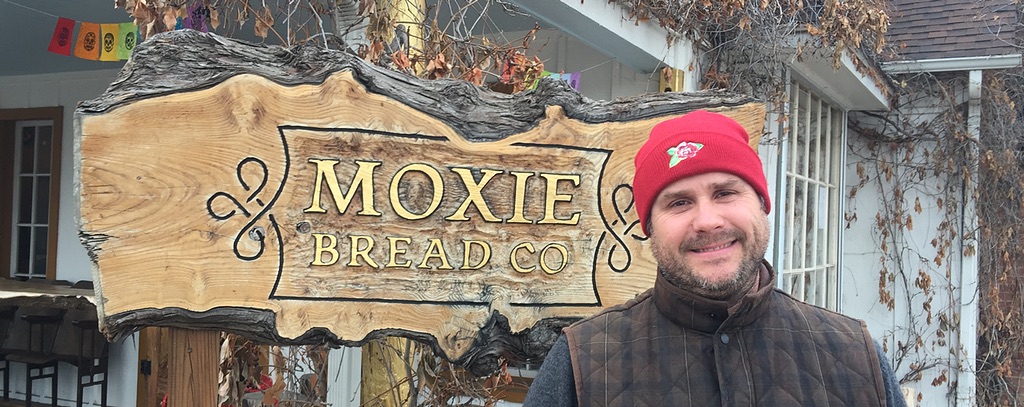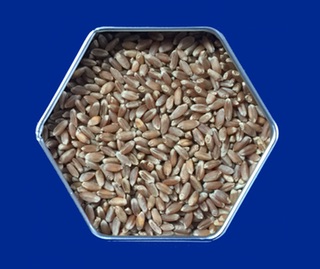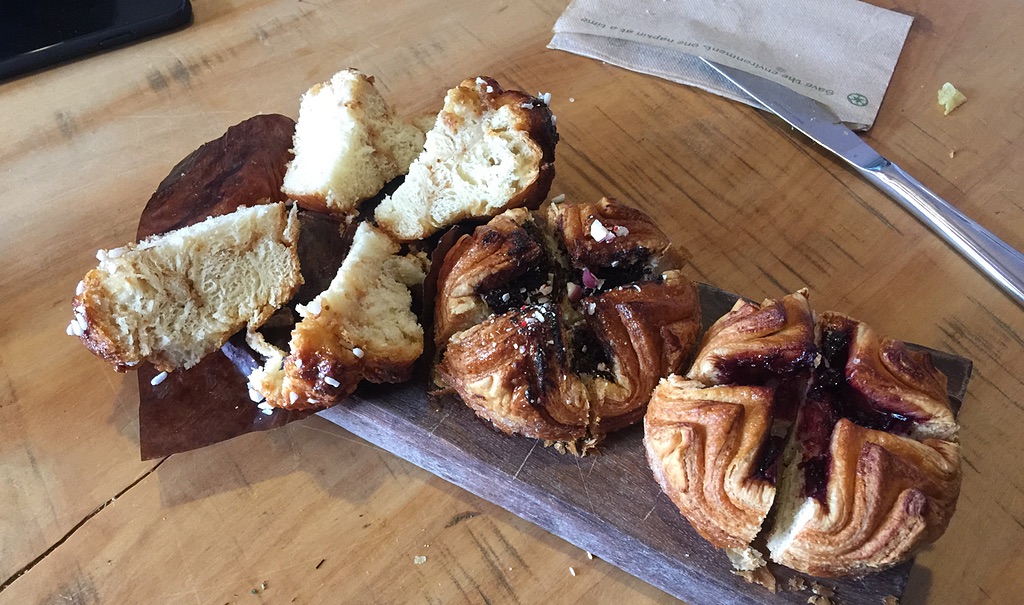
Podcast: Play in new window | Download (Duration: 27:46 — 22.4MB)
Subscribe: Google Podcasts | Spotify | Android | RSS | More
 Andy Clark left Massachusetts in 1994 and wormed his way into one of the iconic bakeries of Boulder, Colorado. After that, he spent 15 years running bakeries for Whole Foods Market. All the while, he was squirreling away ideas and thinking of his own place, where he could focus on 30 great loaves a day, instead of 30,000 for The Man. The result is Moxie Bread Co in Louisville, Colorado, as warm and welcoming a place as I have ever had the pleasure to visit. We talked about bread, and grain, and about creating a welcoming experience. Oh, and perhaps the most decadent pastry I have ever tasted.
Andy Clark left Massachusetts in 1994 and wormed his way into one of the iconic bakeries of Boulder, Colorado. After that, he spent 15 years running bakeries for Whole Foods Market. All the while, he was squirreling away ideas and thinking of his own place, where he could focus on 30 great loaves a day, instead of 30,000 for The Man. The result is Moxie Bread Co in Louisville, Colorado, as warm and welcoming a place as I have ever had the pleasure to visit. We talked about bread, and grain, and about creating a welcoming experience. Oh, and perhaps the most decadent pastry I have ever tasted.

That pastry is the kouign amann, an impossibly delicious amalgam of yeasted dough, butter and sugar that comes originally from Brittany in northern France. All the write-ups of Moxie agreed that their kouign amann was out of the world, and I was somewhat miffed that I had never heard of the things.
Now that I have …
Notes
- Huge thanks to Andrew Calabrese for making the introductions and the arrangements. What a great day.
- Also to our family and friends in Colorado for their friendship and hospitality.
- Moxie Bread Co is, of course, online.
- To learn more about kouign amann, I turned first to David Lebovitz, for a recipe and some alleged history.
- Eater turned to David Lebovitz too, for its informative piece about The Obscure French Pastry Making it Big in America.
- There’s apparently even a National Kouign Amann Day, on 20 June. If I can find one, I’ll be eating it.


 Today’s guest, Michael Victor, has spent the past 16 years living in Laos and getting to know its farming systems and its food. To some extent, that’s become a personal interest. But it is also a professional interest that grew out of his work with farmers and development agencies in Laos. Most recently, he’s been working with The Agro-biodiversity Initiative, funded by the Swiss Agency for Development and Cooperation. The idea is to make use of agricultural biodiversity in a sustainable way to reduce poverty and improve the livelihoods of people in upland regions. One thing the project has done is to collect all the information it can about agricultural biodiversity and make it available online. When Michael visited Rome recently, I grabbed the chance to find out more about Lao food and diversity.
Today’s guest, Michael Victor, has spent the past 16 years living in Laos and getting to know its farming systems and its food. To some extent, that’s become a personal interest. But it is also a professional interest that grew out of his work with farmers and development agencies in Laos. Most recently, he’s been working with The Agro-biodiversity Initiative, funded by the Swiss Agency for Development and Cooperation. The idea is to make use of agricultural biodiversity in a sustainable way to reduce poverty and improve the livelihoods of people in upland regions. One thing the project has done is to collect all the information it can about agricultural biodiversity and make it available online. When Michael visited Rome recently, I grabbed the chance to find out more about Lao food and diversity.